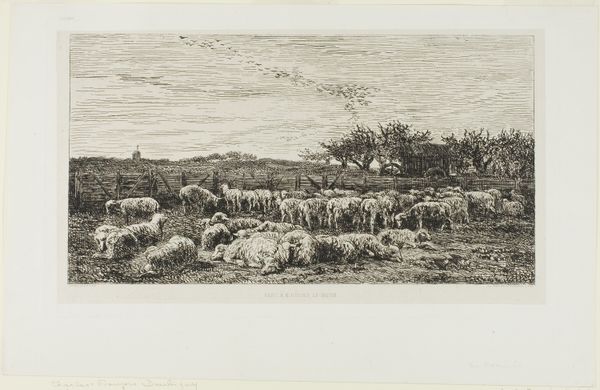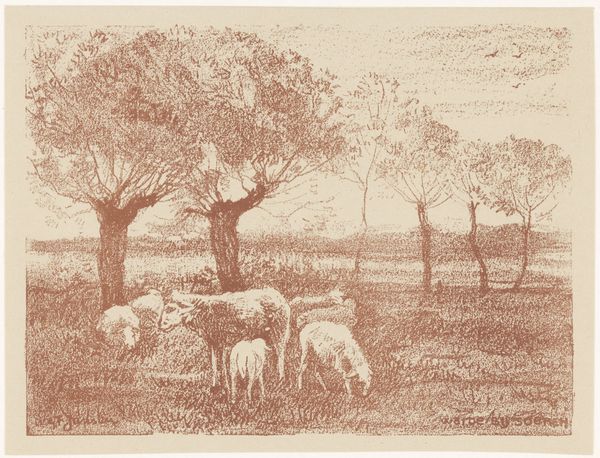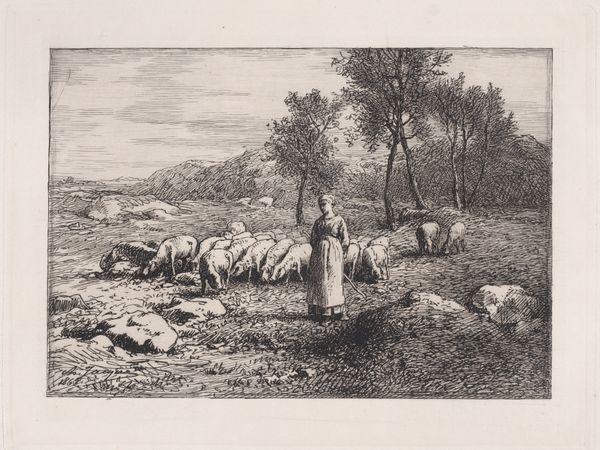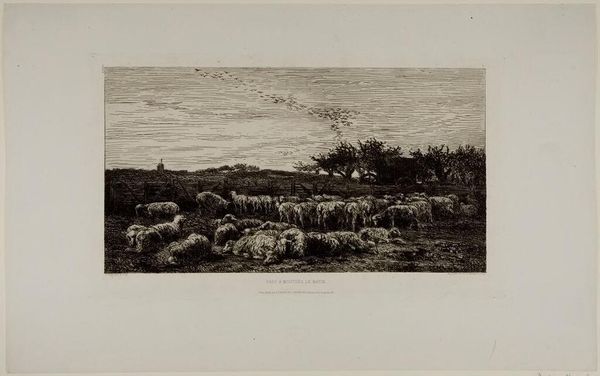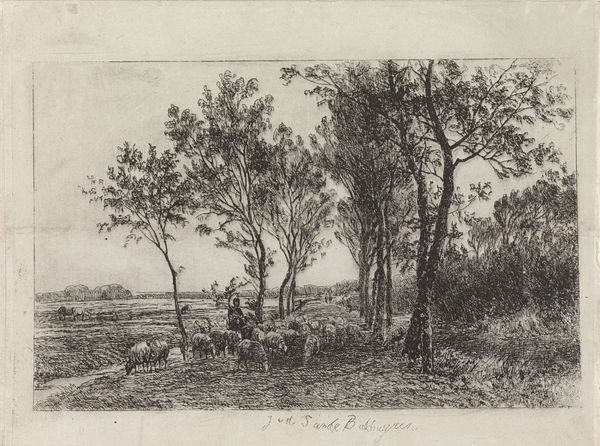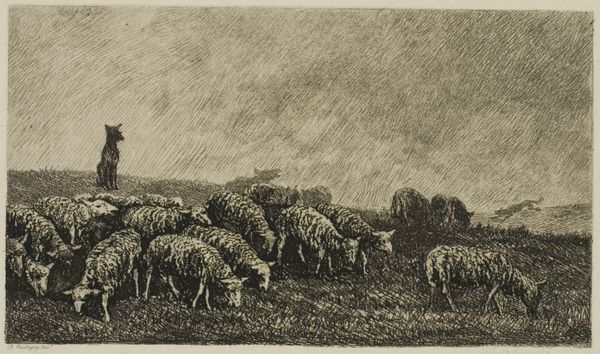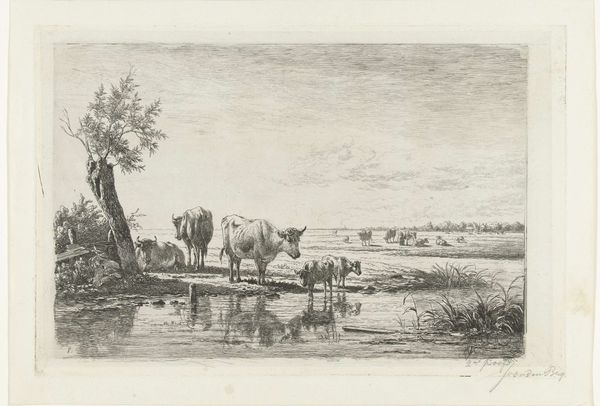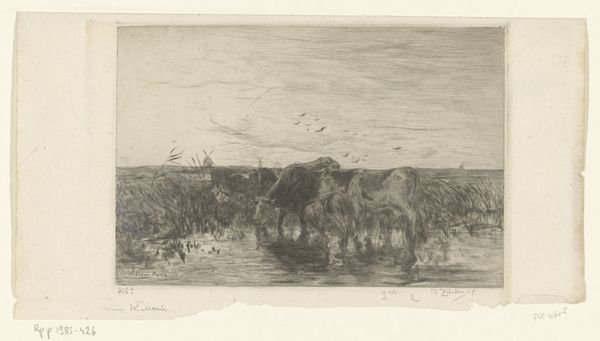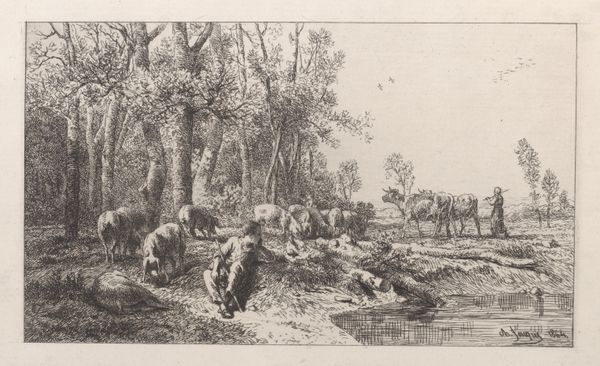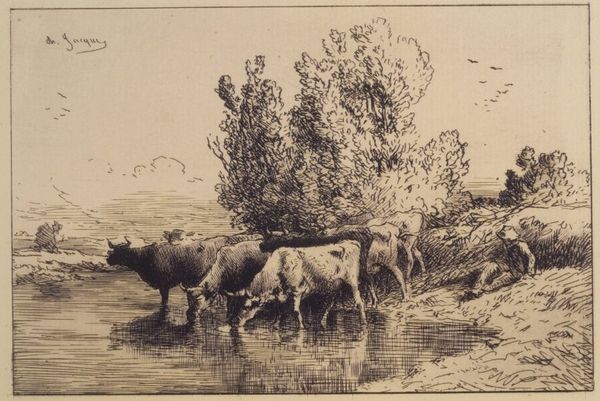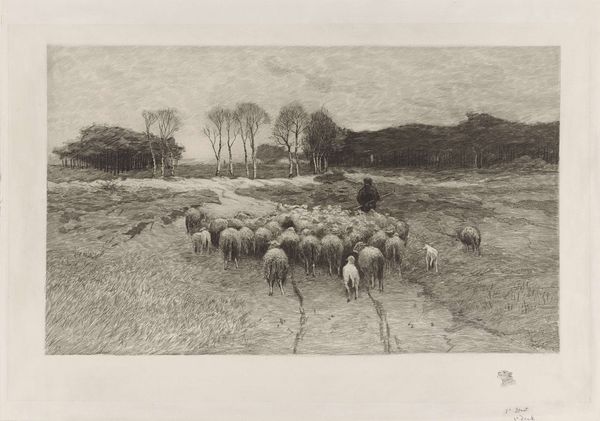
drawing, print, etching, paper
#
drawing
# print
#
etching
#
landscape
#
etching
#
paper
#
genre-painting
#
realism
Dimensions: 186 × 350 mm (image); 282 × 376 mm (sheet)
Copyright: Public Domain
Curator: Here we have Charles-François Daubigny's etching, "The Large Sheepfold," created in 1862. It’s part of the collection here at the Art Institute of Chicago. Editor: It strikes me as beautifully quiet. There's a soft, almost dreamlike quality to the landscape despite being rendered in etching. The texture of the sheep's wool is remarkable given the medium. Curator: Daubigny was a key figure in the Barbizon school, deeply committed to painting en plein air. He really influenced the Impressionists’ move toward portraying everyday life, the transient effects of light. Prints like these were vital for broader distribution and engagement with his art. Editor: You can really sense that focus on everyday life, it’s apparent in the subject but I’m especially struck by how the visible labor that would have gone into making an etching—the patient cross-hatching, the application of acid on the plate. It almost mirrors the work involved in managing a sheepfold. Curator: Absolutely. Consider how the market for prints and drawings exploded in 19th-century France. Daubigny was strategic in using printmaking to broaden his audience. This aligned with a larger movement of democratizing art, bringing rural life into urban homes, allowing the city dwellers to experience the charm of countryside scenes. Editor: And what is so striking is Daubigny's masterful use of a medium often seen as reproductive—etching, when done well, really takes on the hand of the artist in translating a moment of being, despite its mass appeal. Curator: And this particular work really exemplifies the rise of Realism, challenging academic conventions by celebrating ordinary labor and rustic settings. It’s not about grand historical narratives but the simple, dignified existence of rural communities. Editor: Seeing all these sheep just relaxing on the ground, you immediately sense an aspect of domesticity being highlighted. But then it extends beyond just simple portrayal into something quite interesting to think about when one examines labor involved in textile productions. Curator: Well, seeing it through a materialist lens, it highlights how landscapes and scenes of everyday labor become part of this broader consumer network. A seemingly simple etching becomes deeply embedded in this evolving cultural and economic milieu of 19th-century France. Editor: That's true, you begin to sense this circulation from the field, right onto paper in someone’s home! This artwork makes that connection tangible, and it gives one quite a different way to approach Daubigny's pastoral art.
Comments
No comments
Be the first to comment and join the conversation on the ultimate creative platform.
